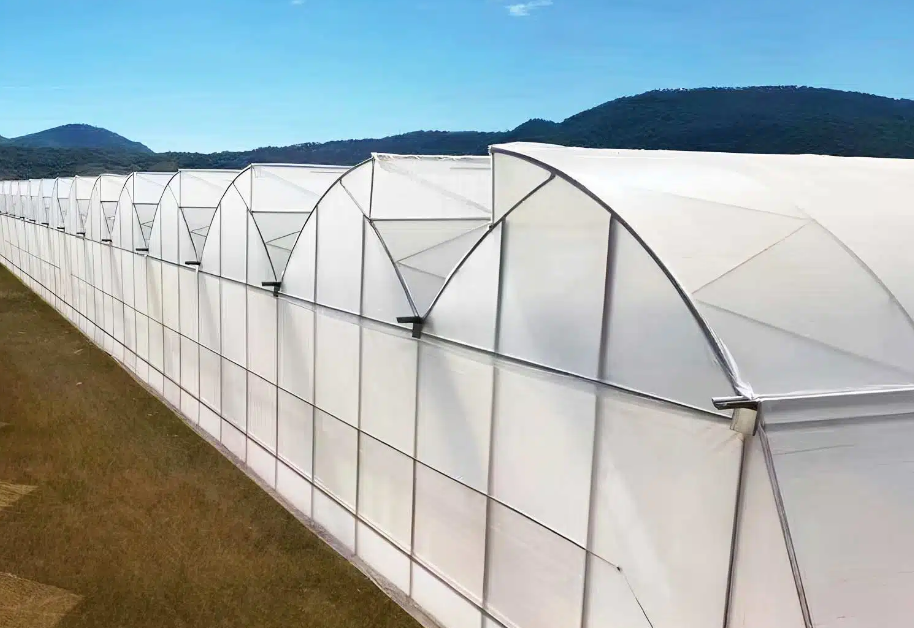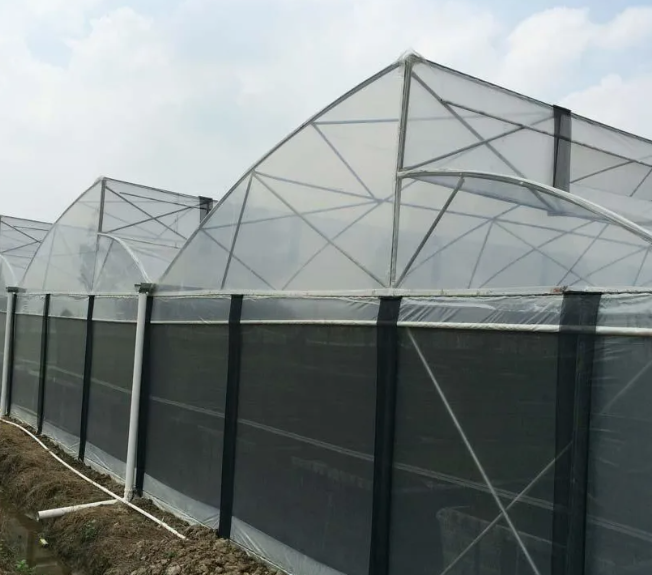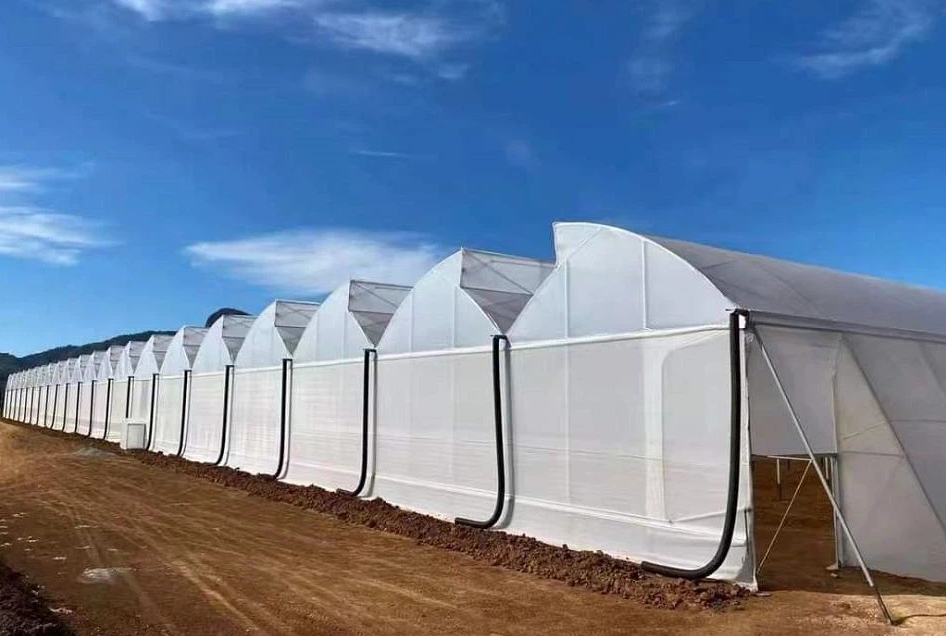In the grand blueprint of modern agricultural facilities, greenhouses play a pivotal role—they provide crops with a controlled, ideal growing environment, shielding them from harsh external weather conditions. Among the various types of greenhouses, the "Sawtooth Greenhouse," named for its unique roof structure, stands out for its unparalleled natural ventilation capabilities, making it particularly popular in tropical and subtropical regions.
Are you troubled by the high cooling costs of your greenhouse during hot summers? Or are you searching for a greenhouse solution that offers both efficient ventilation and resilience against strong winds and heavy rain? Whether you're an experienced agricultural entrepreneur, a curious agricultural student, or a beginner seeking reliable investments, this ultimate guide will take you deep into every aspect of sawtooth greenhouses, from their core working principles to practical construction and maintenance, providing you with a one-stop knowledge feast.

As the name suggests, a sawtooth greenhouse features a roof with continuous "sawtooth" shapes. Each "tooth" consists of two parts: a gently sloping surface covered with light-transmitting materials and a nearly vertical facade, typically equipped with operable ventilation windows. This asymmetrical design is not for aesthetics but serves a core function: maximizing natural ventilation.
This structure originated from the need to address heat dissipation in greenhouses in hot climates. Traditional greenhouses suffer from severe heat buildup during high-temperature seasons, requiring powerful fans for forced ventilation, which consumes enormous energy. The sawtooth greenhouse was born to solve this problem in a more natural and energy-efficient way.
Behind the sawtooth greenhouse's exceptional ventilation lies a fundamental yet powerful physical principle—thermal buoyancy, or the "stack effect."
Hot air rises: Inside the greenhouse, sunlight penetrates through the sloping roof, heating the soil, crops, and air. According to the principle that "hot air rises and cold air sinks," this heated, less dense air naturally gathers at the top of the greenhouse.
Top vents expel air: The vertical windows of the sawtooth roof are located at the highest point where hot air accumulates. When these vents are opened, the pressure difference between the inside and outside drives the hot air to continuously escape from the top.
Cool air replenishes: As hot air exits, a negative pressure forms inside the greenhouse, drawing in relatively cooler, fresh air from side vents, creating a steady and gentle air convection.
This process functions like a giant, passive ventilation system, continuously "cooling down" the greenhouse and providing crops with a comfortable, CO₂-rich growing environment.
Every greenhouse design has its ideal application scenarios. Sawtooth greenhouses have distinct pros and cons, and understanding them is key to making informed decisions.
Unmatched natural ventilation: This is its core advantage. In tropical, subtropical, or hot summer regions, sawtooth greenhouses can significantly reduce reliance on mechanical cooling devices, saving electricity costs and lowering operational expenses.
Superior wind resistance and drainage: The unique roof shape offers aerodynamic advantages, effectively dispersing wind pressure and outperforming large arched greenhouses in wind resistance. Rainwater quickly flows down the sloping roof into gutters, avoiding the "rainwater intrusion" issue of traditional greenhouses, allowing ventilation even during rain.
Uniform light distribution: Despite the vertical facades, scientifically designed angles ensure ample sunlight enters through the sloping surfaces, promoting even light distribution for photosynthesis.
High space utilization and flexibility: Sawtooth greenhouses typically use truss structures, providing open interiors with fewer columns, facilitating the movement of large agricultural machinery. Their spans and bays can be flexibly designed for large-scale commercial production.
Relatively weaker winter insulation: The large vents and high roof structure make heat retention challenging in cold seasons, increasing heating costs in temperate or frigid zones.
Double-layer covering materials (e.g., inflated films or hollow polycarbonate panels) for enhanced insulation.
Internal thermal screens that close at night or during low temperatures.
Efficient heating systems like hot water pipes or heaters for extreme cold.
Solutions:
Higher construction costs: Compared to simple plastic tunnels, sawtooth greenhouses require more complex steel structures, increasing initial costs.
Optimize steel usage through precise engineering design.
Evaluate long-term savings on electricity over 5–10 years for a better return on investment.
Solutions:

Constructing an efficient sawtooth greenhouse requires meticulous planning and attention to detail.
Foundation and columns: Typically use reinforced concrete for stability.
Trusses and beams: Form the skeleton of the "sawtooth" roof, determining span and load capacity.
Gutters: Collect and drain rainwater at the base of each "tooth."
Covering materials:
Sloping roof: High-transparency, anti-aging PO film or polycarbonate panels.
Vertical facades: Polycarbonate panels or films with motor-driven vents.
Walls: Options include films, panels, or insect nets.
Ventilation system: Motorized roof vents and sidewall roll-up windows for natural airflow.
Orientation: The long axis should align perpendicular to the prevailing summer wind direction to enhance cross-ventilation.
Location: Choose flat, well-drained, unobstructed sites for optimal light and airflow.
Steel structure: 40–50% of total cost.
Covering materials: 15–20%.
Systems (shading, heating, irrigation): 20–30%.
Construction and labor: 10–15%.
High-value crops (tomatoes, peppers, strawberries) in hot climates.
Flower cultivation requiring precise temperature/humidity control.
Seedling propagation and agricultural research.
Eco-tourism (e.g., agritourism restaurants).
Inspect bolts and structures for rust or deformation.
Clean films/panels to maintain light transmission.
Clear gutter debris to prevent blockages.
Lubricate motors and moving parts regularly.
Q: Can sawtooth greenhouses withstand typhoons?
A: Yes, professionally designed structures excel in wind resistance.
Q: Does ventilation work on windless days?
A: Yes, the stack effect persists with temperature differences.
Q: Film or polycarbonate panels?
A: Film is cheaper but less durable; panels offer longevity and better insulation.

The sawtooth greenhouse embodies a philosophy of harmonizing with nature. It addresses cooling challenges sustainably, making it a wise long-term investment despite higher upfront costs.
If you're planning to build an efficient greenhouse, may this guide illuminate your path. Contact our expert team for tailored solutions!

Copyright ©Kunyu Greenhouse Co., Ltd. All Rights Reserved | Sitemap